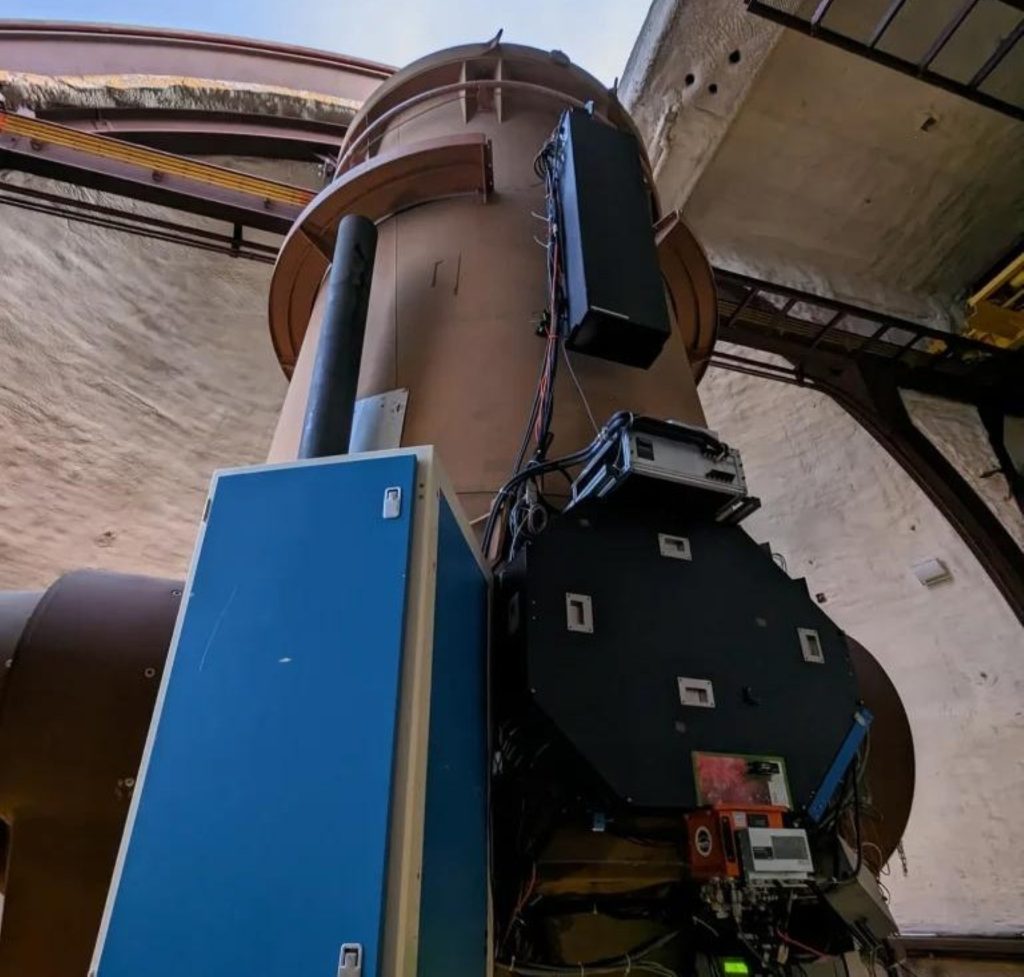UH telescope on Big Island gets new advanced robotic optics courtesy Institute for Astronomy
A new chapter in automated astronomy is underway atop Mauna Kea on the Big Island.
The University of Hawaiʻi Institute for Astronomy launched initial science operations for Robo-AO-2, a robotic laser adaptive optics system now operating at the UH 2.2-meter telescope.
The milestone marks a major leap in how astronomers observe the night sky.

Robo-AO-2 is designed to correct the blur caused by Earth’s atmosphere, sharpening images of hundreds of objects each night with minimal human oversight. The system is led by astronomer Christoph Baranec.
“Making Robo-AO-2 operational represents years of dedicated engineering and innovation,” said Baranec, a member of Institute for Astronomy’s robotic adaptive optics program, in a release about the new optics system. “This system demonstrates how University of Hawaiʻi facilities continue to pioneer technologies that eventually make their way to the world’s largest telescopes and space missions.”
One of the first researchers to use the system is graduate student Guillaume Huber, who is conducting observations for NASA’s future Habitable Worlds Observatory.
“The Habitable Worlds Observatory will search for signs of life on planets orbiting other stars, but first we need to ensure those target stars don’t have close stellar companions,” said Huber in the release. “Robo-AO-2’s ability to rapidly survey hundreds of targets makes it uniquely suited for this preparatory work.”
Huber is vetting a catalog of nearby stars now that could host Earth-like planets.

New funding is driving the system even further. The National Science Foundation and Mt. Cuba Astronomical Foundation this year awarded $679,075 to fully automate Robo-AO-2.
The award will also support testing a new adaptive secondary mirror for the UH 2.2-meter telescope, led by Institute for Astronomy astronomer Mark Chun.
This technology could significantly improve image quality for future ground-based observatories.
“The adaptive secondary mirror will allow us to correct atmospheric turbulence directly at the telescope’s secondary mirror,” Baranec said. “Robo-AO-2 will play a crucial role in testing and validating this technology.”
It’s also about training at Institute for Astronomy.
Students gain rare hands-on experience with real instruments at the university’s own facilities. The UH 2.2-meter telescope serves as a crucial test bed, where new instruments such as the Robo-AO-2 and techniques can be developed before deployment on larger facilities.
“Students are not just operating instruments — they’re helping to build and improve them,” Baranec said. “Those skills are invaluable for careers in astronomy and engineering.”




